
Julianadorp: Curaçao's Hidden Gem
Discover Julianadorp in Curaçao: A tranquil retreat featuring colonial architecture, vibrant local culture, and stunning natural landscapes.
Julianadorp, located in the southern part of Curaçao, is a charming town that offers a blend of culture, history, and natural beauty. Known for its tranquil atmosphere, it is an ideal destination for those looking to escape the hustle and bustle of busier tourist spots. One of the highlights of Julianadorp is its rich history, which can be seen in the well-preserved colonial architecture. Strolling through the town, visitors will find colorful buildings and historical landmarks that tell the story of Curaçao's past. The town also offers a variety of local shops and eateries, where tourists can enjoy traditional Caribbean cuisine and purchase unique souvenirs. Nature enthusiasts will find plenty to do in Julianadorp. The town is surrounded by lush landscapes and is close to some of the island's most beautiful beaches. Visitors can spend their days exploring the nearby nature reserves, snorkeling in crystal-clear waters, or simply relaxing on the sandy shores. With its blend of cultural attractions and natural beauty, Julianadorp is a must-visit destination for any traveler to Curaçao.
Local tips in Julianadorp
- Visit the local shops early in the day to avoid crowds and get the best selection of goods.
- Try the local seafood at one of the town's traditional eateries for an authentic taste of Curaçao.
- Wear comfortable shoes for walking, as the town's streets are best explored on foot.
- Bring snorkeling gear to enjoy the clear waters and vibrant marine life at nearby beaches.
- Check out the local markets for unique souvenirs and handmade crafts.
Julianadorp: Curaçao's Hidden Gem
Julianadorp, located in the southern part of Curaçao, is a charming town that offers a blend of culture, history, and natural beauty. Known for its tranquil atmosphere, it is an ideal destination for those looking to escape the hustle and bustle of busier tourist spots. One of the highlights of Julianadorp is its rich history, which can be seen in the well-preserved colonial architecture. Strolling through the town, visitors will find colorful buildings and historical landmarks that tell the story of Curaçao's past. The town also offers a variety of local shops and eateries, where tourists can enjoy traditional Caribbean cuisine and purchase unique souvenirs. Nature enthusiasts will find plenty to do in Julianadorp. The town is surrounded by lush landscapes and is close to some of the island's most beautiful beaches. Visitors can spend their days exploring the nearby nature reserves, snorkeling in crystal-clear waters, or simply relaxing on the sandy shores. With its blend of cultural attractions and natural beauty, Julianadorp is a must-visit destination for any traveler to Curaçao.
When is the best time to go to Julianadorp?
Iconic landmarks you can’t miss
Queen Emma Bridge
Discover the stunning Queen Emma Bridge in Willemstad, Curaçao, where picturesque views and rich culture converge in a vibrant island setting.

Hato Caves
Explore the stunning Hato Caves in Curaçao, where nature's beauty meets history in a captivating underground world filled with wonders.

Museum Kura Hulanda
Explore the rich history and culture of Curaçao at Museum Kura Hulanda, a captivating history museum in Willemstad that tells the stories of the Caribbean.

Landhuis Bloemhof cultural center
Experience the cultural richness of Curaçao at Landhuis Bloemhof, a vibrant center for art, history, and nature in Willemstad.

Manor Knip
Discover the captivating history and stunning vistas at Manor Knip, a heritage building that showcases Curaçao's rich cultural legacy.

Forti Boka Sami
Discover the culinary delights of Curaçao at Forti Boka Sami, where local flavors and breathtaking views create an unforgettable dining experience.

Punda Love Heart
Discover the vibrant charm and colorful culture at Punda Love Heart in Willemstad, Curaçao—an unmissable attraction for every traveler.

Desenkadená; Unchained (Tula Monument)
Discover the rich history and vibrant culture of Curaçao at Desenkadená; Unchained, a premier museum and impressive monument in Willemstad.
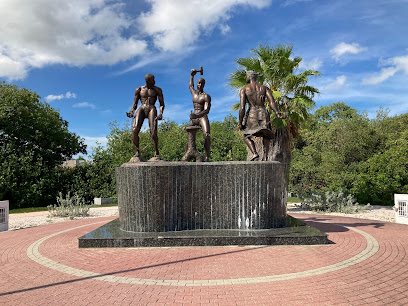
Gallery Alma Blou
Discover the creative heart of Curaçao at Gallery Alma Blou, where local art and culture come alive in a vibrant and welcoming setting.

B&B Villa Zomerland Curaçao
Discover the charm of Curaçao at B&B Villa Zomerland, where comfort meets local hospitality in the heart of Willemstad.

Kas Di Ala appartementen - Curacao
Discover the serene beauty of Curacao at Kas Di Ala, a charming holiday park perfect for relaxation and adventure.

Landhuis San Juan
Explore Landhuis San Juan, a historical gem in Curaçao, showcasing stunning architecture and rich cultural heritage in a lush tropical setting.

Annidas Sambuyá Studios & Apartments
Discover the charm of Curaçao at Annidas Sambuyá Studios & Apartments, your cozy retreat in the heart of Julianadorp, Willemstad.
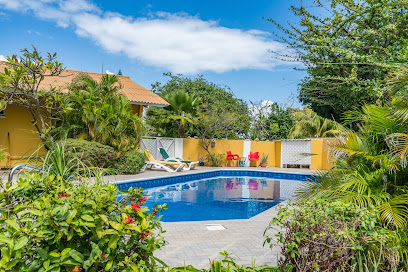
Landhuis Ronde Klip
Explore the captivating history and stunning architecture of Landhuis Ronde Klip, a premier heritage site in Willemstad, Curaçao.

Landhuis Vredenberg
Explore the historic Landhuis Vredenberg in Willemstad, Curaçao. Immerse yourself in the island's rich cultural heritage through its stunning architecture and serene gardens.

Unmissable attractions to see
Queen Emma Bridge
Experience the iconic Queen Emma Bridge in Willemstad, a stunning floating bridge offering breathtaking views and a glimpse into Curaçao's vibrant culture.

Mambo Beach
Discover the vibrant atmosphere and stunning beauty of Mambo Beach in Willemstad, Curaçao - a perfect paradise for relaxation and adventure.

Cas Abao Beach
Experience the breathtaking beauty and vibrant marine life at Cas Abao Beach in Willemstad, Curaçao – a perfect getaway for relaxation and adventure.

Curaçao Sea Aquarium
Explore the vibrant marine life at Curaçao Sea Aquarium, a top tourist attraction in Willemstad, offering hands-on experiences and educational encounters.
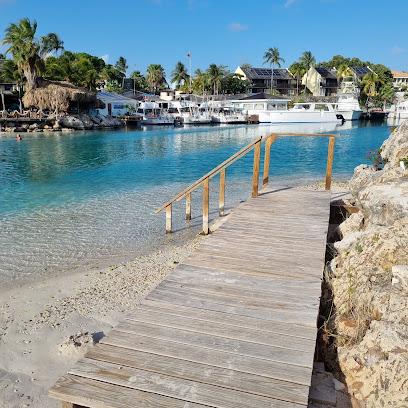
Kokomo Beach
Discover the allure of Kokomo Beach, a vibrant public beach in Willemstad, Curaçao, perfect for relaxation, adventure, and unforgettable memories.

Landhuis Chobolobo
Experience the rich heritage of Curaçao at Landhuis Chobolobo, home of the iconic Blue Curaçao liqueur.

Grote Knip
Discover the stunning beauty of Grote Knip, one of Curaçao's most beautiful beaches, perfect for swimming and snorkeling in crystal-clear waters.

Hato Caves
Discover the enchanting Hato Caves in Curaçao, a breathtaking tourist attraction featuring stunning limestone formations and rich historical significance.

Playa Grandi
Experience the breathtaking beauty of Playa Grandi in Curaçao, a tropical paradise perfect for swimming, snorkeling, and soaking up the sun.

Christoffel National Park
Discover the breathtaking landscapes and rich biodiversity of Christoffel National Park, a must-visit national park in Curaçao for nature lovers and adventurers.

Playa Lagun
Discover the enchanting Playa Lagun in Curaçao, a tropical paradise ideal for swimming, snorkeling, and basking in the sun on its pristine shores.

Shete Boka National Park
Discover the breathtaking landscapes and unique wildlife of Shete Boka National Park, a coastal gem in Curaçao perfect for nature lovers and adventure seekers.

Daaibooi Beach
Discover the stunning beauty of Daaibooi Beach in Curaçao, where crystal-clear waters meet golden sands for an unforgettable beach experience.

Brión Square
Explore the vibrant Brión Square in Willemstad, Curaçao, where culture, history, and local cuisine come together in a stunning colonial setting.

Museum Kura Hulanda
Explore the rich cultural heritage of Curaçao at Museum Kura Hulanda, a captivating history museum showcasing the island's diverse past.

Essential places to dine
Pirate Bay Curaçao Beach Club and Restaurant
Discover culinary delights and breathtaking views at Pirate Bay Curaçao Beach Club - a tropical paradise for food lovers.
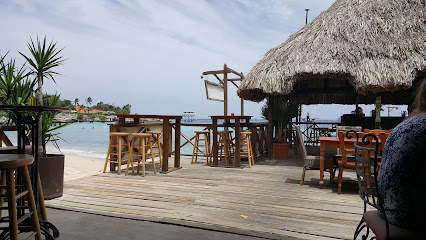
Restaurant & Café Gouverneur De Rouville
Discover exquisite Caribbean flavors at Restaurant & Café Gouverneur De Rouville in Willemstad – where culinary artistry meets breathtaking views.

Dal Toro Restaurant
Discover the flavors of Italy at Dal Toro Restaurant in Willemstad – where authentic cuisine meets Caribbean charm.

Perla Del Mar
Discover culinary delights at Perla Del Mar in Willemstad - a vibrant restaurant offering local flavors and international cuisine.

The Niffo Huts
Discover flavorful local dishes at The Niffo Huts, where vibrant atmosphere meets culinary excellence in Sint Michiel, Curaçao.

Fish & Joy Bistro & Wine Bar Curaçao
Discover exquisite Caribbean cuisine at Fish & Joy Bistro & Wine Bar in Willemstad, Curaçao – where every meal is a celebration of flavor.
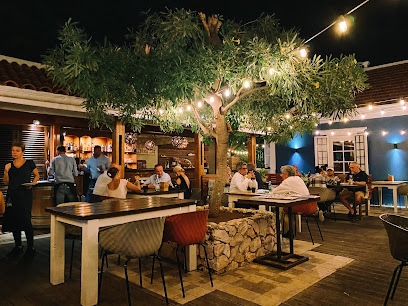
Eastern Dynasty Restaurant
Discover the vibrant flavors of authentic Chinese cuisine at Eastern Dynasty Restaurant in Willemstad, Curaçao - where tradition meets taste.

De Fles
Experience authentic Curaçaoan flavors at De Fles, where every dish tells a story amidst vibrant Caribbean ambiance.
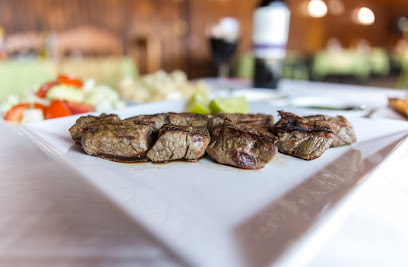
DiVerse Sauzen Curaçao
Experience the vibrant fusion of Caribbean, Creole, and Mexican flavors at DiVerse Sauzen in Sint Michiel, Curaçao.

Coast Beach Restaurant @ Blue Bay Curaçao Golf & Beach Resort
Experience exquisite flavors and breathtaking ocean views at Coast Beach Restaurant in Blue Bay Curaçao Golf & Beach Resort.

Restaurant X
Discover the vibrant flavors of Curaçao at Restaurant X—where fresh ingredients meet warm hospitality in a stunning setting.

Zhong Wah Sin Restaurant
Discover authentic Asian flavors blended with local Caribbean influences at Zhong Wah Sin Restaurant in Willemstad.

Grillz Food Station
Experience the vibrant flavors of Caribbean cuisine at Grillz Food Station in Willemstad - where every meal is a celebration.

Brass Boer Curaçao
Experience exquisite Caribbean dining at Brass Boer Curaçao - where local flavors meet culinary artistry amidst stunning coastal views.

Pamela Terrace
Discover Pamela Terrace in Willemstad: A vibrant restaurant offering delicious Caribbean cuisine and a warm atmosphere perfect for all travelers.

Markets, malls and hidden boutiques
La Curacao
Explore La Curacao in Willemstad for an unforgettable shopping experience, offering a wide selection of products in a vibrant atmosphere.

Penha Duty Free Curacao in Punda
Experience the luxury of Penha Duty Free in Punda, Curacao, where exquisite perfumes, cosmetics, and fine liquors await every traveler.

Kids Paradise
Discover the magic of childhood at Kids Paradise, the ultimate store for toys and children's apparel in Willemstad, Curaçao.

Chichi Shop Punda
Discover unique handcrafted souvenirs at Chichi Shop Punda, the perfect place to find a piece of Curaçao to take home.

Klein Hofje gardens
Experience the vibrant flavors of Curaçao at Klein Hofje Gardens, a charming grocery store in Willemstad with local produce and delightful snacks.
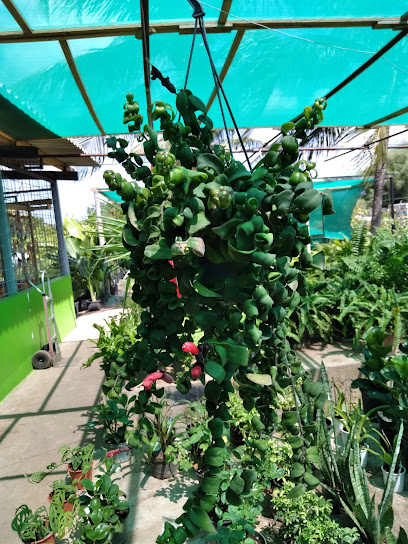
Jian Daal Minimarket
Explore Jian Daal Minimarket in Curacao for a taste of local life with fresh produce and essential grocery items to enhance your island experience.

Concept Store by Sea & Sand
Explore the vibrant Concept Store by Sea & Sand in Willemstad, Curaçao – a treasure trove of local artistry and unique finds.
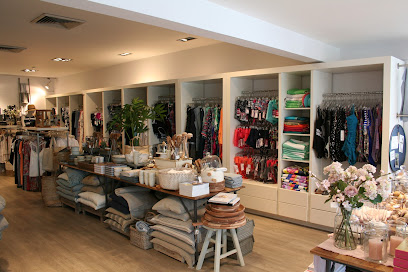
Jolly Fashion by Prakash
Explore Jolly Fashion by Prakash in Willemstad for unique clothing, exquisite jewelry, and delightful perfumes that capture the essence of Curaçao.
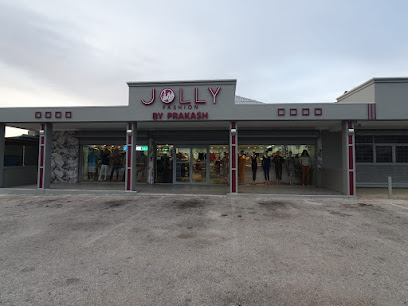
JOY by OPRA
Explore JOY by OPRA in Willemstad, a gift shop brimming with unique treasures and local crafts that embody the spirit of Curaçao.
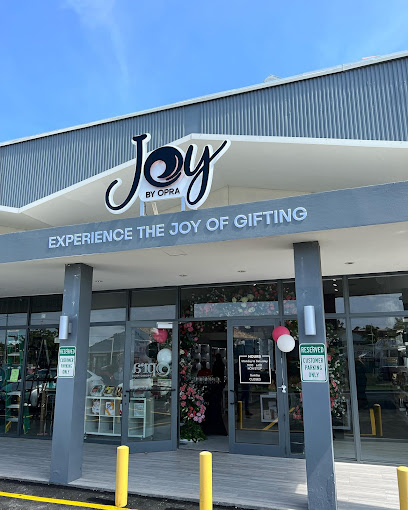
Fu long minimarket
Explore local flavors and essentials at Fu Long Minimarket, your charming grocery stop in Willemstad, Curaçao.

Island Treasures
Explore Island Treasures in Willemstad for local crafts, unique gifts, and authentic Curaçao souvenirs amidst a vibrant shopping atmosphere.

KreaDiva
Discover your passion for sewing at KreaDiva, a vibrant sewing shop in Willemstad, Curaçao, offering fabrics, classes, and expert alterations.

I love Curacao #The hidden beauty of the Caribbean
Explore I Love Curacao for authentic souvenirs that celebrate the vibrant culture and beauty of the Caribbean, perfect for every traveler.
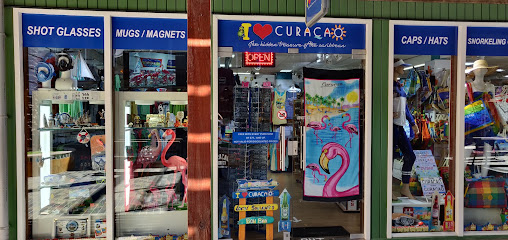
Britt Shop
Discover the vibrant spirit of Curacao at Britt Shop, your go-to destination for unique gifts and local treasures that embody the island's charm.

AURA FASHION
Shop at AURA FASHION in Willemstad for stylish women's clothing at affordable prices, perfect for your Caribbean adventure.
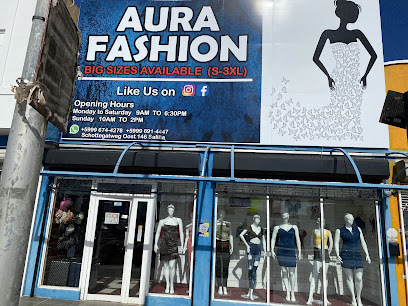
Essential bars & hidden hideouts
Netto Bar
Discover the lively atmosphere of Netto Bar in Willemstad, where exquisite cocktails meet Caribbean charm in a vibrant setting.

The Sopranos Sport Bar & Pizzeria
Discover the vibrant atmosphere at The Sopranos Sport Bar & Pizzeria in Willemstad, Curaçao – your go-to spot for sports and delicious pizza!

La Fogata Terrace & Sports Bar
Experience the vibrant flavors of Curaçao at La Fogata Terrace & Sports Bar, where delicious grilled dishes meet a lively sports atmosphere.

Doo-shee cocktail bar
Discover the vibrant atmosphere and creative cocktails at Doo-shee cocktail bar in Otrobanda, Willemstad, the perfect spot for relaxation and socializing.

Le Mem Sports Club
Experience the ultimate sports bar atmosphere at Le Mem Sports Club in Willemstad, a top destination for fun, games, and local brews.

Curadise Bar Restaurant
Discover the vibrant atmosphere and refreshing cocktails at Curadise Bar Restaurant in Willemstad, Curaçao—your tropical oasis awaits.

The World Best Mojito Bar
Experience the vibrant spirit of Curaçao at The World Best Mojito Bar, where refreshing cocktails and lively atmosphere await every visitor.

THE BEER STATION CURACAO
Discover the vibrant flavors of Curaçao at The Beer Station, where delicious grilling meets an extensive selection of craft beers for a unique dining experience.
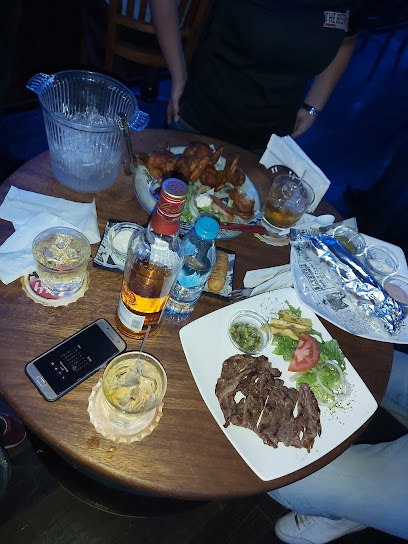
Blend Beach Bar @ Blue Bay Curaçao Golf & Beach Resort
Discover Blend Beach Bar, your tropical retreat on Curaçao with stunning beach views, refreshing cocktails, and a vibrant atmosphere.

GAZE Bar & Lounge Curaçao
Discover GAZE Bar & Lounge in Curaçao - a vibrant gay bar offering cocktails, live music, and a welcoming atmosphere for all.

Frena Pretu Snack
Discover the vibrant atmosphere and local flavors at Frena Pretu Snack, your gateway to the authentic Caribbean experience in Willemstad, Curaçao.
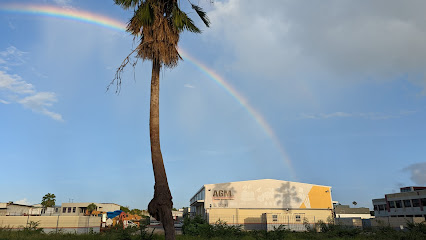
Terrasa clarimar curacao
Discover the vibrant culture and stunning views at Terrasa Clarimar, a must-visit bar in the heart of Curaçao.

Blastbar qrasow
Discover the vibrant nightlife of Curaçao at Blastbar Qrasow, where stunning waterfront views meet exquisite cocktails in a lively atmosphere.

Tabú Bar & Bites Curacao
Experience the vibrant nightlife of Curacao at Tabú Bar & Bites, where innovative cocktails and delicious bites create unforgettable moments.

Pera Lobby Bar & Patisserie
Discover the charm of Pera Lobby Bar & Patisserie in Willemstad, where exquisite pastries and refreshing drinks meet a vibrant atmosphere.

Local Phrases
-
- HelloBon dia
[bon dee-a] - GoodbyeAyo
[i-yo] - YesSi
[see] - NoNo
[no] - Please/You're welcomePor fabor
[por fa-bor] - Thank youDanki
[dan-kee] - Excuse me/SorryDiskulpa
[dis-kool-pa] - How are you?Kon ta bai?
[kon ta bai] - Fine. And you?Bon. I bo?
[bon. ee bo] - Do you speak English?Bo papia Ingles?
[bo pa-pi-a in-gles] - I don't understandMi no ta kompronde
[mee no ta kom-prohn-de]
- HelloBon dia
-
- I'd like to see the menu, pleaseMi ke mira e menu, por fabor
[mee kee mee-ra e me-nu, por fa-bor] - I don't eat meatMi no kome karni
[mee no ko-me kar-nee] - Cheers!Salú!
[sa-loo] - I would like to pay, pleaseMi ke paga, por fabor
[mee kee pa-ga, por fa-bor]
- I'd like to see the menu, pleaseMi ke mira e menu, por fabor
-
- Help!Yudami!
[yu-da-mee] - Go away!Bai for di aki!
[bai for dee a-kee] - Call the Police!Yama polis!
[ya-ma po-lis] - Call a doctor!Yama dokter!
[ya-ma dok-ter] - I'm lostMi ta perdi
[mee ta per-dee] - I'm illMi ta malu
[mee ta ma-loo]
- Help!Yudami!
-
- I'd like to buy...Mi ke kumpra...
[mee kee koom-pra] - I'm just lookingMi ta solamente mira
[mee ta so-la-men-te mee-ra] - How much is it?Kuantu esaki ta?
[kwan-too eh-sa-kee ta] - That's too expensiveEsaki ta muchu karu
[eh-sa-kee ta moo-choo ka-roo] - Can you lower the price?Bo por baha prijs?
[bo por ba-ha prees]
- I'd like to buy...Mi ke kumpra...
-
- What time is it?Kuantu ora ta?
[kwan-too o-ra ta] - It's one o'clockTa un or
[ta oon or] - Half past (10)Mitad di diez
[mee-tad dee dee-ehz] - MorningMarduga
[mar-doo-ga] - AfternoonAtardi
[a-tar-dee] - EveningAnochi
[a-no-chee] - YesterdayAyera
[a-ye-ra] - TodayAwe
[a-we] - TomorrowMañana
[ma-nya-na] - 1Uno
[oo-no] - 2Dos
[dos] - 3Tres
[tres] - 4Cuatro
[kwa-tro] - 5Cinco
[sin-ko] - 6Seis
[sayz] - 7Siete
[syet-te] - 8Ocho
[o-cho] - 9Nueve
[nwe-ve] - 10Diez
[dee-ehz]
- What time is it?Kuantu ora ta?
-
- Where's a/the...?Unda tin un/e...
[oon-da tin oon/o] - What's the address?Kua ta e adres?
[kwa ta e a-dres] - Can you show me (on the map)?Bo por mustra mi (riba e mapa)?
[bo por moos-tra mee (ree-ba e ma-pa)] - When's the next (bus)?Ki ora e siguiente (bus)?
[kee o-ra e see-gwen-te (bus)] - A ticket (to ....)Un ticket (pa ....)
[oon tee-ket (pa)]
- Where's a/the...?Unda tin un/e...
History of Julianadorp
-
Julianadorp was established in the early 20th century as a residential area for employees of the Royal Dutch Shell oil refinery, which was a major economic driver in Curacao. The neighborhood is named after Princess Juliana of the Netherlands, reflecting the colonial ties between Curacao and the Dutch Kingdom.
-
The architecture of Julianadorp is a testament to its colonial past and the influence of Dutch design. The area is characterized by spacious, well-built homes with large gardens, reflecting the higher economic status of its original inhabitants. Many of these homes have been preserved and still stand as a reminder of the area's historical significance.
-
The establishment of the Shell oil refinery in the 1910s had a profound impact on Julianadorp and Curacao as a whole. It brought a wave of economic activity and job opportunities, which led to the development of residential areas like Julianadorp. The refinery played a crucial role in shaping the economic landscape of the island during the 20th century.
-
Julianadorp has always been a melting pot of cultures, owing to the diverse workforce attracted by the oil refinery. Residents from different parts of the world brought their own traditions, cuisines, and customs, contributing to the rich cultural tapestry that characterizes the area today. This multicultural influence is evident in local festivals, food, and daily life.
-
The establishment of schools and educational institutions in and around Julianadorp was a direct consequence of the area's development. Schools such as the International School of Curacao were founded to cater to the children of expatriates and local residents, providing high-quality education and fostering a sense of community among residents.
-
Julianadorp is known for its lush green spaces and recreational facilities. The neighborhood was designed with ample parks and playgrounds, providing residents with areas for leisure and relaxation. These green spaces have been well-maintained over the years and continue to be a central feature of community life in Julianadorp.
-
The post-colonial era brought significant changes to Julianadorp, as Curacao moved towards greater autonomy and eventual independence within the Kingdom of the Netherlands. This period saw a shift in the demographic and socio-economic makeup of the neighborhood, reflecting the broader changes occurring across the island.
-
Today, Julianadorp is a vibrant and dynamic area that retains its historical charm while embracing modernity. The neighborhood has evolved to accommodate new businesses, restaurants, and cultural venues, making it a popular destination for both locals and tourists. Its rich history and cultural diversity continue to attract visitors who are eager to explore its unique heritage.
Julianadorp Essentials
-
Julianadorp is located in Curacao, a Caribbean island. The nearest international airport is Hato International Airport (CUR), approximately 10 kilometers away. From the airport, you can take a taxi or rent a car to reach Julianadorp. The journey typically takes around 15 minutes by road. Some hotels also offer shuttle services from the airport.
-
Julianadorp is a small area, and many attractions are within walking distance. For longer trips, local taxis are readily available. Public buses operate within Curacao and can be used to reach nearby areas. Renting a car can also be a convenient option for exploring the island at your own pace.
-
The official currency in Curacao is the Netherlands Antillean Guilder (ANG). US Dollars are also widely accepted. Credit cards are accepted in most hotels, restaurants, and shops, but it is advisable to carry some cash for smaller establishments. ATMs are available throughout Julianadorp and Curacao for cash withdrawals.
-
Julianadorp is generally a safe destination for tourists. However, it is advisable to take standard precautions. Avoid walking alone at night in unfamiliar areas and keep an eye on your belongings in crowded places. Some areas in Willemstad, such as Punda and Otrobanda, have higher crime rates targeting tourists, so exercise caution when visiting these areas.
-
In case of an emergency, dial 911 for immediate assistance. The local police station and medical facilities are available in Julianadorp and nearby Willemstad. It is recommended to have travel insurance that covers medical emergencies. For minor health issues, there are pharmacies where you can purchase over-the-counter medications.
-
Fashion: Do dress comfortably for the tropical climate, but avoid overly revealing clothing. Religion: Do respect local customs and traditions, especially in religious sites. Public Transport: Do be respectful and polite to drivers and fellow passengers. Don’t eat or drink on public transport. Greetings: Do greet people with a friendly 'Bon Dia' (Good Morning) or 'Bon Tardi' (Good Afternoon). Eating & Drinking: Do try local dishes like 'Keshi Yena' and 'Bitterballen.' Don’t refuse hospitality, as it is considered impolite.
-
To experience Julianadorp like a local, visit the local markets and shops where you can buy fresh produce and traditional goods. Engage with locals, as they are often friendly and willing to share stories about the area’s history and culture. Don’t miss visiting nearby beaches like Blue Bay Beach for a relaxing day by the sea. For a unique experience, take a guided tour of the local plantations to learn about Curacao’s agricultural heritage.
Trending Landmark in Julianadorp
-
Queen Emma Bridge
-
Hato Caves
-
Museum Kura Hulanda
-
Landhuis Bloemhof cultural center
-
Manor Knip
-
Forti Boka Sami
-
Punda Love Heart
-
Desenkadená; Unchained (Tula Monument)
-
Gallery Alma Blou
-
B&B Villa Zomerland Curaçao
-
Kas Di Ala appartementen - Curacao
-
Landhuis San Juan
-
Annidas Sambuyá Studios & Apartments
-
Landhuis Ronde Klip
-
Landhuis Vredenberg
Nearby Cities to Julianadorp
-
Things To Do in Sint Michiel
-
Things To Do in Willemstad
-
Things To Do in Barber
-
Things To Do in Soto
-
Things To Do in Sabana Westpunt
-
Things To Do in Westpunt
-
Things To Do in San Nicolas
-
Things To Do in Savaneta
-
Things To Do in Santa Cruz
-
Things To Do in Pos Chiquito
-
Things To Do in Paradera
-
Things To Do in Sero Blanco
-
Things To Do in Tanki Leendert
-
Things To Do in Oranjestad
-
Things To Do in Noord








